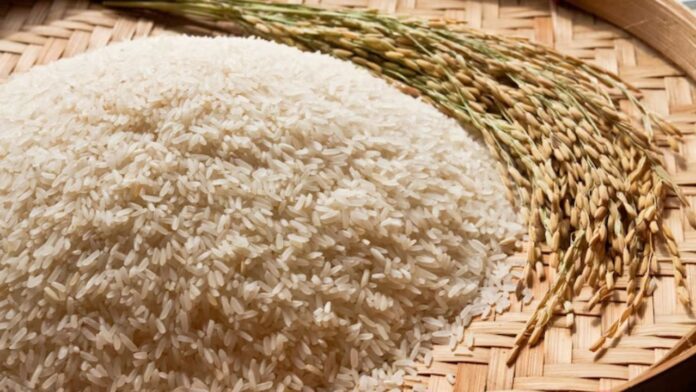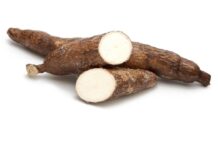The Asia-Pacific Region harvests and consumes more than 90% of the world’s rice crop, with China and India accounting for more than half of total production. The dominance of these countries can be attributed to their huge paddy fields, large rural labor force, and suitable weather, all of which provide perfect circumstances for paddy farming.
Rice is a tropical and subtropical crop that requires both water and warmth to thrive. The Yangtze River in China, the Ganges-Brahmaputra in India-Bangladesh, and the Mekong in Vietnam all have fertile delta sections that produce alluvial soil suitable for rice farming.
Similarly, despite dealing with climate change and unpredictable weather patterns, Indonesia and Bangladesh have regularly placed among the top five global producers as a result of creative farming practices and the development of climate-resilient rice strains. Although not a significant producer, Japan has established a solid global share for farming premium, short-grain rice varieties such as Koshihikari and Sasanishiki. Aside from Asia, the United States, Brazil, and Egypt are significant players in worldwide rice production, despite problems such as labor shortages, water scarcity, and land constraints.
However, the Asia-Pacific Region, which is home to approximately 60% of the world’s population, is also experiencing 0.96% annual population growth. As a result, many countries’ rice self-sufficiency is declining, and climate change is contributing to this.
Because of its dense population and growing per capita rice consumption (almost 221 pounds per year), China is a prominent rice importer even though its production is among the greatest. Global per capita rice consumption is close to 54 kg per year, necessitating improved grain distribution between rice exporter and importer countries.
What Impact Does Rice Production Have on Food Insecurity?
COVID-19 harmed more than four years of poverty eradication efforts, causing roughly 93 million additional people to fall into extreme poverty by 2020. Furthermore, 2.4 billion individuals (more than 30% of the population) were moderately or severely food insecure in 2020, resulting in limited access to food.
Rice crops, being a low-cost, nutrient-dense food source, play an important part in tackling this problem. With the world’s population expected to exceed 9.7 billion by 2050 (with the majority of this expansion occurring in rice-growing nations), there is an urgent need to increase rice production.
The need to increase rice production in order to ensure food supplies for the world’s rising population has spawned a new generation of financial companies. Venture funding in agtech businesses focused on rice production has expanded significantly in recent years, according to Tracxn, an investment tracking tool.
Bowery Farming, a New York-based firm, employs indoor vertical farming to grow produce, including rice, while using 95% less water and 100 times less land than traditional agriculture. It garnered $300 million in Series C fundraising, demonstrating the magnitude of possible profits for investors.
Bowery Farming’s tech-driven approach to rice farming lowers production costs per unit, enhancing profit margins. The market potential for these firms is enormous, with global food demand anticipated to climb by 70% by 2050.
As agtech grows in size, the potential for increased profitability becomes clear, making it a tempting investment offer. According to a Global Agtech Initiative research, the agtech sector will attract 2.4% of total startup investments in 2022 as a result of increased interest in sophisticated technologies.
Rice productivity has been impacted by mechanization and high-yielding rice seeds, particularly in China and India. Regardless of advances, food scarcity remains a danger, especially in Sub-Saharan Africa and South Asia, where rice is a staple grain.
Lower crop output might result in increased prices and rice becoming less affordable for low-income households, creating food insecurity. The worldwide food price crisis of 2007-2008, in which a dramatic rise in food prices resulted in widespread famine and social unrest, is a clear reminder of this potential impact.
Read Also: 5 Calcium-Rich Food Options that can Promote Heart Health
Climate Change’s Impact on Rice Production
Climate change is expected to exacerbate weather variability, resulting in more extreme events such as floods, droughts, and heat waves. These changes pose considerable threats to the quantity of rice produced.
Higher temperatures, in particular, can diminish rice plant photosynthetic efficiency, reduce grain quality, and result in poorer yields. According to research, a 1°C increase in the minimum temperature of the dry crop season might result in a 10% decrease in grain yield.
Floods can also cause significant yield losses in rice fields, while extended droughts might result in crop failure. For example, the 2022 Pakistan floods resulted in an estimated loss of 19.4 million tons of rice, with the country’s Sindh area being the most affected.
Mitigating these changes necessitates the development of new rice varieties that are more tolerant to extreme weather conditions as well as variations in temperature, salt, and water availability.
World’s Top 20 Rice-Producing Countries
1. China
Harvested Surface Area: 30 million hectares
Rice is China’s second most important commodity, and it has maintained its status as the world’s top rice producer. A production of 214,403,870.1 tonnes in crop year 2021 highlighted the country’s agricultural strength. This yield is the result of meticulous cultivation throughout 30,145,222 hectares of harvested land, demonstrating the country’s comprehensive and effective farming practices. The magnitude of these figures demonstrates China’s commitment to food security and its ability to use its vast agricultural legacy.
2. India
Harvested Surface Area: 46 million hectares
India is the world’s second-largest producer of rice and a major player in the global agriculture economy. In 2021, this South Asian country cultivated 195,425,000 tonnes of rice. The fact that 46,379,000 hectares of the country’s land was harvested for this staple crop demonstrates the immensity of the production. This densely knit web of agricultural riches is India’s lifeline and the principal motor of its food sector.
3. Bangladesh
Harvested Surface Area: 11.7 million hectares
Due to its specific meteorological advantages, Bangladesh finished the crop year 2021 with 56,944,553.97 tonnes of rice. The lush deltas of the Ganges, Brahmaputra, and Meghna rivers graciously cradle Bangladesh, providing an ideal habitat for rice growth. Furthermore, Bangladeshi farmers’ use of modern farming technologies and the use of high-yielding cultivars has increased productivity.
Read More: Top 10 Best Chocolate Producing Countries in the World
4. Indonesia
Harvested Surface Area: 10 million hectares
In the crop year 2021, Indonesia collected 54,415,294 tonnes of rice, making it a key player in the global agricultural arena. According to UNFAO statistics, this production came from a harvest area of 10,411,801 hectares, showing the country’s wide stretches of fertile fields. Notably, rice is an important part of the nation’s cultural fiber as well as a crucial economic driver.
5. Vietnam
Harvested Surface Area: 7.2 million hectares
In 2021, Vietnam produced an astounding amount of 43,852,728.69 tonnes of rice grain on 7,219,797 hectares of agricultural land. Furthermore, despite a smaller harvested area than Thailand, Vietnam outperformed its Southeast Asian counterpart in rice output. This accomplishment exemplifies Vietnam’s strategic emphasis on agricultural goals to increase productivity while working with limited arable land.
6. Thailand
Harvested Surface Area: 11 million hectares
Thailand’s agricultural market share remained constant in crop year 2021, with an astounding 33,582,000 tonnes of rice produced. Furthermore, it harvested 11,244,000 hectares of rice, demonstrating the country’s agricultural strength. These data emphasize Thailand’s critical role in the global food chain, indicating the potential for future expansion and sustainability of its agro-industry. It is one of the world’s leading rice producers.
7. Myanmar
Harvested Surface Area: 6.5 million hectares
Myanmar, whose agriculture sector is its backbone, will be the seventh largest rice-producing country in 2021. Myanmar contributed 25 million tonnes of rice to the world’s rice grain harvest despite climate challenges to its agricultural area. This country devotes around 6.536 million hectares to rice paddies and employs innovative agricultural techniques to ensure that weather changes do not affect grain fields.
8. Philippines
Harvested Surface Area: 4.8 million hectares
In 2021, the Philippines harvested 19,960,170.2 tonnes of rice, demonstrating strong agricultural productivity. This enormous harvest required 4,805,077 hectares of rich soil spread across the archipelago. This accomplishment highlights the country’s large-scale devotion to rice production and good paddy cultivation circumstances.
9. Pakistan
Harvested Surface Area: 3.5 million hectares
Rice is Pakistan’s fifth greatest commodity in terms of production, and despite natural disasters such as floods, the country produced 13,984,009 tonnes of rice in 2021. Pakistan’s rice harvest area spans 3,537,369 hectares, demonstrating the link between land management and agricultural productivity.
10. Brazil
Harvested Surface Area: 1.7 million hectares
South America is the world’s tenth largest rice producer. Brazil is expected to produce 11,660,603 tonnes of rice per year by 2021, thanks to its fertile territory and subtropical climate that supports rice farms. Furthermore, the total rice harvest area in Brazil was 1.7 million hectares, resulting in this significant grain production in 2021. Year after year, the painstaking orchestration of resources and labor contributes to Brazil’s rice harvest.
11. Cambodia
Harvested Surface Area: 3.2 million hectares
Cambodia maintained its position as the world’s 11th largest rice producer, producing 11.41 million tonnes of rice during the 2021 harvest year. It obtained this yield by harvesting over 3.25 million hectares of land in the kingdom’s water-sufficient regions. The output figures for 2021 demonstrate a continuing commitment to improving agricultural productivity and the agro-industrial landscape, making Cambodia one of the world’s largest rice producing countries.
12. Japan
Harvested Surface Area: 1.4 million hectares
In 2021, Japan’s resilient agriculture sector produced 10,525,400 tonnes of rice, demonstrating outstanding resilience. This accomplishment covered a harvested area of 1,404,000 hectares, demonstrating the country’s effectiveness in maximising production per unit of land. Japan has also made an important contribution to the global agri-food market by introducing high-quality short-grain rice.
13. United States
Harvested Surface Area: 1 million hectares
In 2021, the United States will produce 8,699,720 tonnes of rice on 1,006,870 hectares of land. The significant yield per hectare is a distinguishing aspect of American rice production, reflecting the fertility of the country’s soil as well as the country’s rigorous approach to crop management, making it one of the top rice producing countries.
14. Nigeria
Harvested Surface Area: 4.3 million hectares
Despite economic and health challenges, Nigeria has a strong agro-industrial system capable of effectively transforming inputs into abundant harvests. It’s clear from the country’s 2021 rice production, which totaled 8,342,000 tonnes spread throughout a harvest area of 4,320,100 hectares, encompassing a sizable portion of the country’s arable territory.
15. Nepal
Harvested Surface Area: 1.5 million hectares
Rice is the most important food grain in Nepal, followed by corn and wheat. Nepal harvested 1.5 million hectares of arable land for rice growing in order to meet the country’s rice needs. As a result, rice output in 2021 will be 5,621,710 tonnes. Despite significant geographical challenges and little arable land, Nepal has maximized productivity from available resources.
16. South Korea
Harvested Surface Area: 0.7 million hectares
The Republic of Korea’s agronomic success in rice production in the 2021 crop year was commendable. According to official figures, the country produced an amazing 5,211,037 tonnes of rice on 732,477 hectares. As a result, the yield per acre was extraordinary, supporting the sustainability of the country’s agricultural management.
17. Sri Lanka
Harvested Surface Area: 1 million hectares
Sri Lanka has been self-sufficient in rice production for its 22.16 million inhabitants. However, in the midst of major floods and crop damage, the country just decided to import rice in 2021. Nonetheless, Sri Lanka harvested grain on 1,126,605 hectares and received a yield of 5,149,596 tonnes of rice in 2021.
18. Egypt
Harvested Surface Area: 0.5 million hectares
Egypt harvested grain on about 0.5 million hectares during the 2021 crop year, with a total production volume of 4,841,327.1 tonnes. Egypt’s climatic characteristics, as well as the fertile Nile Valley and Delta, lead to a rice growing landscape that is generally high-yielding. The country has efficiently capitalized on these natural assets, attaining an excellent yield density and becoming one of the world’s largest rice producers.
19. Madagascar
Harvested Surface Area:1.6 million hectares
Madagascar is the third largest rice producer in Africa, trailing only Nigeria and Egypt. In 2021, the country produced 4,391,386 tonnes of rice on 1,600,000 hectares. Madagascar’s per-hectare rice consumption is low in comparison to the country’s overall consumption needs. Madagascar’s rice business similarly has a dichotomy: it is both a primary producer and a major consumer.
20. Laos
Harvested Surface Area: 0.9 million hectares
Laos, a primarily agrarian Southeast Asian country, contributed significantly to the world’s rice supply in 2021, producing 3,870,000 tonnes. This harvest resulted from a total cultivation area of 943,194 hectares, demonstrating the country’s significant dedication to rice growing. Despite these encouraging results, Laos has yet to fully maximize its rice yield.




























